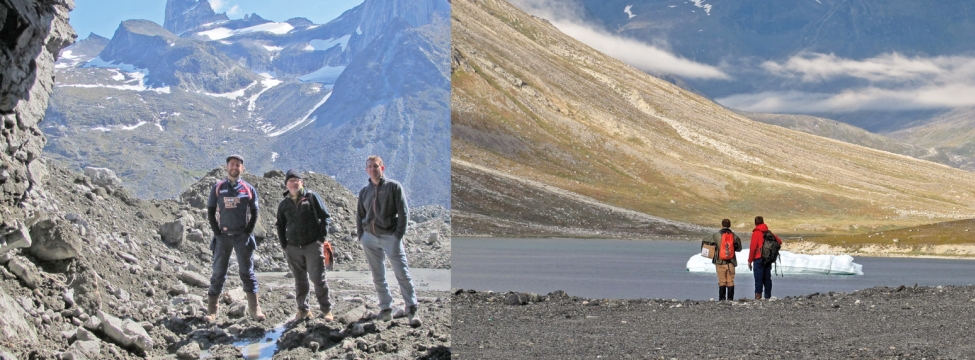To serve you better, our new website displays information specific to your location.
Please visit the site and bookmark it for future use.
You are here
SRK Kazakhstan ›Exploring Greenland’s gold districts
SRK News | Issue 57: Exploration Geology: Keys to success
Jon Russill, Principal Exploration Geologist
William Kellaway, Geologist
Greenland has numerous gold showings, but only one has ever been mined. The Nalunaq Gold Mine in South Greenland opened in 2004 following the discovery of a gold-quartz vein in the Kirkespirdalen Valley 12 years earlier. The Nalunaq discovery, like all good exploration tales, was made at the very end of a field season when a geologist stumbled upon an outcrop that glittered with visible gold. Nalunaq means “the place that is hard to find” and this alludes to the challenges of exploration in this area.
Nalunaq is an orogenic gold deposit, hosted in a quartz vein that averages 0.7 m wide (the ‘Main Vein’) within a highly continuous shear structure in Palaeoproterozoic metavolcanic rocks, part of the Ketilidian Mobile Belt. The Main Vein is a classic example of its type: grade distribution is very erratic, the gold is coarse and free, and resource estimation challenging; grades can be extreme: 5,240 g/t gold has been reported. Due to this extreme nugget, an approach of drilling for known structure first, with grade second, was employed in the late 1990s and early 2000s by Crew Gold.
Underground mining, using longhole open-stoping methods, took place between 2004 and 2013, first by Crew Gold and later by Angel Mining PLC, who installed a CIP plant within the mine. By 2013, about 367,000 oz of gold was estimated to have been recovered from 700,000 t of ore. Mining ceased, the site was remediated and closed in 2014, leaving a common perception that the deposit had been exhausted.
Arctic-Resources (now AEX Gold Inc.) challenged this view and acquired the mining licence in 2015. SRK’s task was to make the case for Nalunaq’s exploration potential and test these ideas in the field.
An SRK team of geologists, mining engineers and geotechnical engineers visited Nalunaq during the 2015 and 2016 field seasons, approaching the project from all angles. Underground conditions and infrastructure were assessed, along with a study of the pillars, remnants and sweepings (gold-bearing fines) that remain. The relationship between gold grade continuity in the Main Vein and faulting was closely examined. Metallurgical check sampling was also conducted. On the surface, a team of specialist mountaineers worked on the upper parts of the mountain to locate and sample the Main Vein.
Surface sampling produced exciting results, confirming that the Main Vein structure is still auriferous up-dip and across the mountain. Underground findings were equally significant, discovering frequent structural offsets to the Main Vein resulting in lost reefs and implying a continuity of mineralisation that may not have been recognised by previous miners. Based on these results, unexplored potential at Nalunaq has been highlighted and targeted for further investigation.


